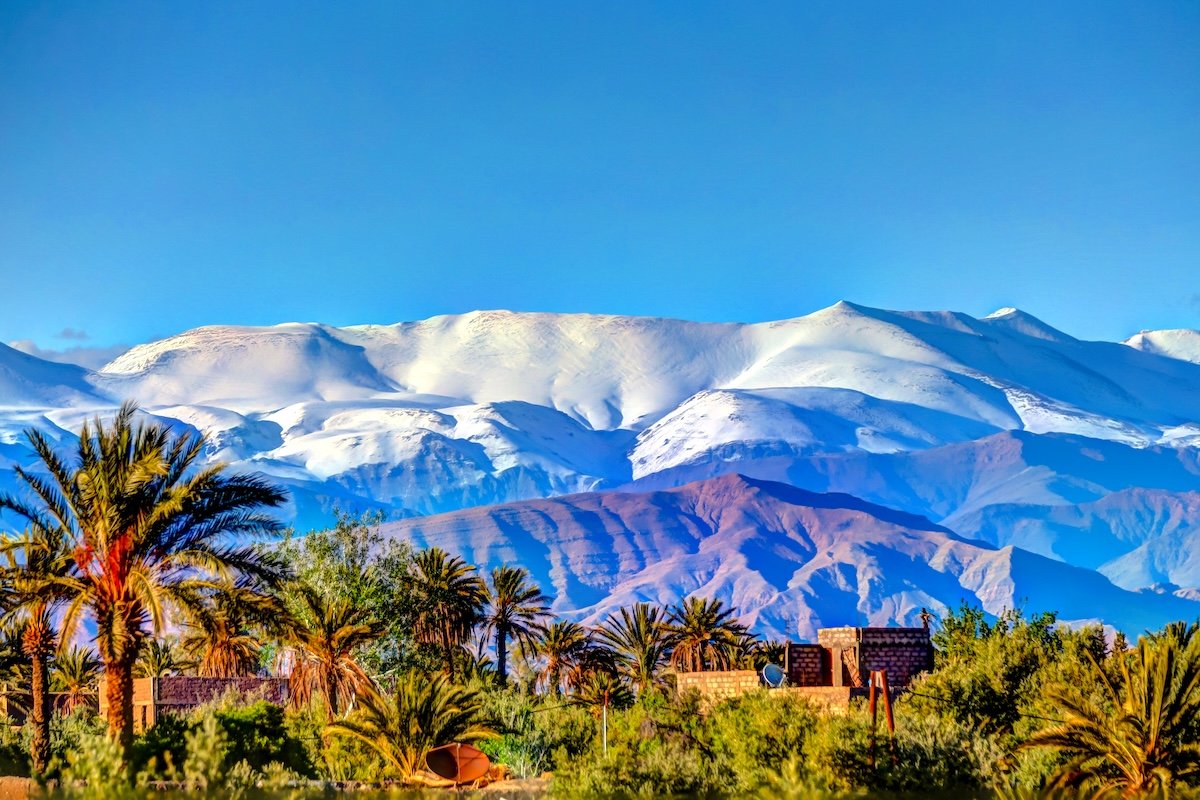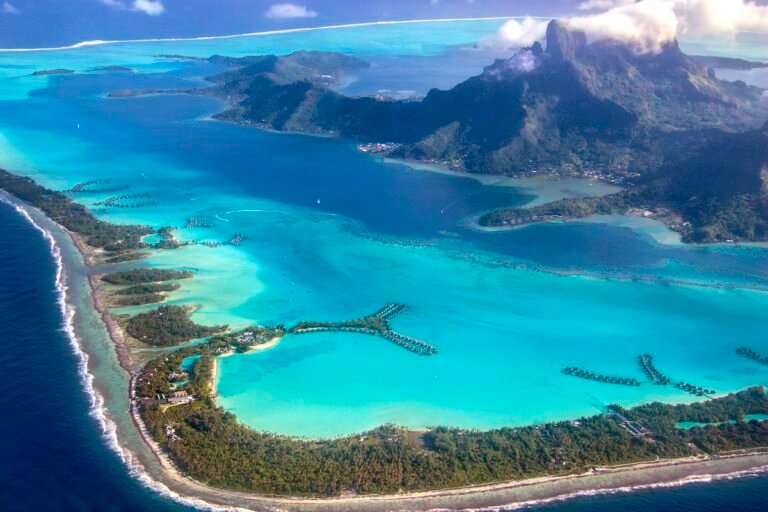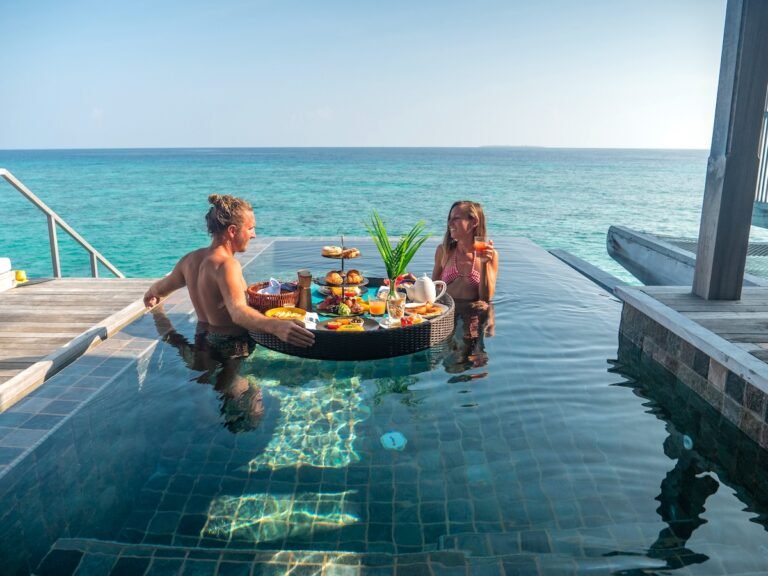Imagine yourself on top of a mountain where you know the air is crisp as you gaze out over the land with untold views and colours shimmering throughout the horizon. Below you see colours from traditional Berber Villages sprinkled throughout the valleys. This is not a dream. This is the Atlas Mountains in Morocco.
The Atlas Mountains have a mix of opportunities that will please your senses and your soul. There is everything from hiking through lush valleys to authentic Moroccan hammams. However, act quickly, before everyone finds this hidden paradise. Come, let me show you!
Discover the Beauty of the Atlas Mountains
Exploring the Majestic Atlas Mountains Across North Africa
The Atlas Mountain range extends through Morocco, Algeria and Tunisia, so most tourists are adventurous and nearly all have decided to visit during their vacation to Morocco. When hunting through the valleys in this area, you will notice vast mountains reach from the valley to the sky.
The highest point, Jebel Toubkal, reaches an impressive 4,167 meters. The range is divided into three sections: the High Atlas, Middle Atlas and Anti-Atlas, each with its own unique landscape and experience.

Breathtaking nature
No matter where you go in the Atlas Mountains, you are sure to be impressed by the stunning natural beauty. The diverse ecosystems range from lush cedar forests in the north to arid, rocky terrain in the south.
You’ll discover streams of pristine water tumbling down rocky slopes, creating stunning waterfalls that engage you to pause and marvel. You’re bound to see Barbary macaques, foxes and many species of birds that also populate the area.
The seasons produce an impressive collection of colour changes from the snow that covers the peaks during winter to the blooming meadows of wildflowers in spring. You’ll be rewarded with incredible panoramic views for many miles that provide a feeling of peace and being positively connected to nature.
The Atlas Mountains are a wonderful part of the essence of a scenic getaway, providing you with an unforgettable experience of Morocco’s natural wonders.
Immerse Yourself in Berber Culture
Discover the Heart of Tradition
The Berber culture is one of the oldest and most vibrant traditions, dating back thousands of years. Their indigenous peoples produce colourful textiles and intricate architecture to complement their renowned hospitality. Almost always greeting travelers with mint tea and homemade tagine.
One fact that may surprise people is that many Berber villages still speak Tamazight, which is a language completely foreign to Arabic or French. Visiting the Atlas Mountains is a rare opportunity to see a living culture that has thrived for centuries alongside nature.
Authentic Moroccan cuisine
You’ll find Berber food is a blend of mixing flavours and traditions. While you’re in the Mountains, you’ll have a chance to taste tagine, slow-cooked stews with incredible aromatics, with meat or vegetables.
You’ll definitely want to try couscous, a staple of any Berber family, which often includes a colourful array of vegetables and meat. To experience true authenticity, enjoy a cup of mint tea, a marker of Moroccan hospitality, while visiting local families.

Vibrant markets and souks
Absorb the atmosphere of the Berber markets and souks. These bustling hubs are not just places to shop, they provide a window to this vibrant culture. You can navigate narrow alleys surrounded by colours, smells and sounds.
Every piece displayed a handwoven carpet or handmade jewellery, which carries a thousand years of history and craftsmanship. Local vendors are eager to discuss items for sale and bargaining is part of the experience, so don’t hesitate.

Ancient customs and traditions
As you move deeper into Berber culture, you’ll discover a rich tapestry of customs and traditions that have been preserved for centuries. You might see the art of henna painting, where intricate patterns are featured on hands or feet, only for special occasions.
You may also want to experience their music and dance presentation, where musicians play rhythmic drum beats and the oud, allowing you to feel like you went back in time. Which offers a genuine view of Berber life and gives you the opportunity to connect with this beautiful culture.
Adventure Activities Shaped by Stunning Physical Features
Hiking, trekking and mountain biking options
There are many exciting hiking trails in and around for different experience levels. For the more adventurous person, hike up Mount Toubkal, the tallest peak in North Africa. During your climb, you’ll be rewarded with stunning views of rugged terrain and far-off villages.
If you’d like a more gentle experience, check out the verdant Ourika Valley, where you can wander through terraced fields and pastoral Berber settlements. Mountain bikers will surely love the variations of terrain that the Atlas Mountains have to offer.
You can ride on rocky trails, through winding descents and embed yourself in lush forest trails. You may also consider taking a multi-day trip on your bike from Marrakech to the Sahara and get to experience the changing landscapes along the way.
Rock Climbing Adventures in the stunning Mountains
These Mountains are a dream for any rock climber. You may find varied routes for both beginner and more adept climbers. Beginner climbers should consider Oukaïmeden as it has a large selection of granite rock with many easy to moderate climbs. Also, not as busy as the advanced climbing venues and has beautiful high-altitude views.
Advanced climbers seeking a true challenge and an unforgettable adrenaline rush should set their sights on Taghia Gorge. With stunning limestone walls up to 800 meters high, it offers the most multi-pitch treks but provides more difficult challenges. This trek requires much more endurance and professional climbing skills set than technical.

Paragliding opportunities
If you want an exhilarating adventure from the sky, try paragliding in the Atlas Mountains. Flying high above the mountain peaks, you will also be able to see the magnificent valleys beneath you.
Some of the popular launch sites are the Dades Valley and the Imlil region. Whether you are an experienced paraglider or a beginner’s tandem ride soaring over the peaks will surely take your breath away.
Tour Authentic Moroccan Wellness
Traditional hammams and spas
Experience authentic Moroccan wellness by sampling traditional hammams and spa treatments. The ancient bathing rituals are a great way to rejuvenate and recharge your body and soul. You will immediately feel stress-free as you enter the steamy chambers.
Skilled attendants will guide you through each step in the process. You will be thoroughly cleaned with black soap, followed by scrubbing with a kessa glove. End the experience with a soothing massage using pure argan oil that leaves your skin glowing and muscles relaxed.
Natural hot springs and thermal baths
The Atlas Mountains are home to many natural hot springs and thermal baths. You can find yourself soaking away in warm mineral waters surrounded by a beautiful mountain. The thermal waters are believed to ichor for muscle aches, improve circulation or a little of both. You can find rustic, open-air springs or more developed thermal baths that will cater to your leisure.
Yoga and meditation retreats
When you consider fully transforming your wellness experience, consider joining a yoga or meditation retreat. You will be absorbed in nature and inhale the mountain air, allowing you to deepen your practice and find inner peace.
Many retreats offer daily yoga, guided meditation and mindfulness workshops. You will also be able to mingle and learn with anyone like-minded in a tranquil retreat.
Plan Your Adventure Through the Mountains
The best time to visit
The timing of your trip is the most important thing to consider when you visit the Atlas Mountains. The best time to visit this incredible area of the country is in the spring (April to May) and autumn (September to October). These times of the year bring mild temperatures and mostly clear skies.
The summer months (June to August) can be extremely hot in the lower regions, but it’s an excellent time to visit the higher altitudes where temperatures remain cooler. The winter months (November to March) bring snow to the peaks, which may provide good experiences for winter sports enthusiasts, but some of the mountain passes may be closed.
Essential packing list
Make sure your packing includes the essentials for a fun and safe trip in the Morocco area. Be sure to pack clothing appropriate for the culture you will be visiting, especially if you plan to experience Berber villages. If nothing else, in your essentials bag, you should have:
- Solid hiking shoes
- Layered clothing (make sure to have an extra warm layer for cool evenings)
- Sun protection (hat, sunglasses and high SPF sunscreen)
- Reusable water container
- First aid kit
- A camera to capture the beautiful surroundings
- Cash, in case you are in a remote spot where the card is not accepted
- Power bank for phones and/or other devices
Transportation
You should have a variety of ways to get to the High Atlas Mountains and get around while there. You can hire a car in major cities like Marrakech or Fez, which gives you the flexibility to explore at your own pace. Alternatively, if you want to be more leisurely about your trip, you can hire a driver or look for an organised tour, if you would prefer that.
If you’re feeling adventurous, local buses connect larger towns, but be aware that your journey will take longer. If you are planning a trip to the more remote parts of the mountains, a 4×4 is usually required and any tour operator or place of accommodation will be able to arrange one on your behalf.
Accommodation options
The Atlas Mountains have a variety of accommodation options to suit most styles and budgets. You will find luxury resorts offering stunning views of the mountains, as well as more rustic guesthouses in small villages or a traditional Berber homestay for the full experience.
If you’re brave, you could try camping under the stars, an experience you won’t forget. Many of the places offer traditional hammams and spa facilities to relax after a day of adventure.

Safety precautions
These destinations are generally safe, however, just as you would in any other country, you should take some precautions. Always check the weather before heading out, especially if you plan to hike or do other outdoor activities.
When you do a more challenging hike, we suggest going with a local guide who knows the area and can help with some other local insight. Remember to keep hydrated, protect yourself from the sun and always be prepared to change plans if the weather changes. Also, respect the locals and dress appropriately, especially in rural villages.
Festivals and events to plan around
Visiting when local festivals are taking place can also add a different cultural element to your travels. The Rose Festival in El Kelaa M’Gouna (May) celebrates the harvest of the roses with music, dance and a parade. The Imilchil Marriage Festival (September) is a vibrant celebration by the Berber people of the High Atlas.
Finally, for anyone interested in music, the Fez Festival of World Sacred Music (June) showcases music from a variety of traditions, both sacred and spiritual. These festivals give you a chance to engage with the culture of the locals and create fantastic adventures of your travels around Morocco.
Conclusion
Travel to Morocco offers a unique journey of beauty, culture and adventure. As you plan your time in this beautiful part of the world, the Atlas Mountains are not just about the fabulously beautiful vistas.
The Atlas Mountains are an opportunity for some authentic Moroccan experiences. So pack your bags to dive and embrace the spirit of adventure. The anticipation of experiences creates lasting memories and a sense of place in the natural scenery of Morocco.
FAQ
Below is a list of questions frequently asked:
What is special about the Atlas Mountains?
The Atlas Mountains are unique in their amazing landscapes, cultural heritage, and adventure tourism. They are located in Morocco, Algeria, and Tunisia and include snowcapped peaks, hilltop villages, deep valleys, and a rich diversity of ecosystems. There is also the indigenous Berber people. Travellers will have the opportunity to experience the authentic way of life of one of the oldest groups of people in Africa in terms of their traditions, local food, and lifestyle in the villages. With diverse opportunities for hiking, trekking, or simply taking in the sights from a shady spot, the Atlas Mountains can’t be beat!
What city is closest to the Atlas Mountains?
Marrakech is the nearest major city to the Atlas Mountains. A short drive from the High Atlas Range, it is one of the most popular gateways for those traveling to mountain villages like Imlil, Ouirgane and Asni. Certainly you can arrange for a day trip from Marrakech or a multi-day trek in the mountains for hiking and cultural experiences with beautiful scenery.
Where are the High Atlas Mountains in Morocco?
The High Atlas Mountains traverse the central region of Morocco from near the Atlantic Coast, close to Agadir, to the northeastern highlands around Midelt. The High Atlas Mountain range separates the coastal plain from the Sahara Desert and also contains North Africa’s top peak, Mount Toubkal. Because of the access offered by the High Atlas encouraged by the proximity of cities such as Marrakech, the High Atlas is a common destination for hiking, cultural tours, and other natural experiences.
Do the Atlas Mountains run through Morocco?
Yes, the Atlas Mountains are found in Morocco and are one of the country’s most important features. The range is best known as a whole across North Africa, but in Morocco, there are three major divisions: the High Atlas, Middle Atlas, and the Anti-Atlas. The mountains are renowned for their magnificent scenery, Berber villages, and outdoor adventure, and one of the most regarded natural features in Moroccan geography and tourism.
How do you get to the Atlas Mountains in Morocco?
If you want to go to the Atlas Mountains, Morocco’s easiest access point is to travel from Marrakech, the nearest major city. You can go on a guided tour, hire a private driver or self-drive to popular mountain sites such as Imlil, Ouirgane or the Toubkal National Park. The drive from Marrakech to the High Atlas usually takes 1.5 to 2 hours, so day trips/multi-day trips are possible.











